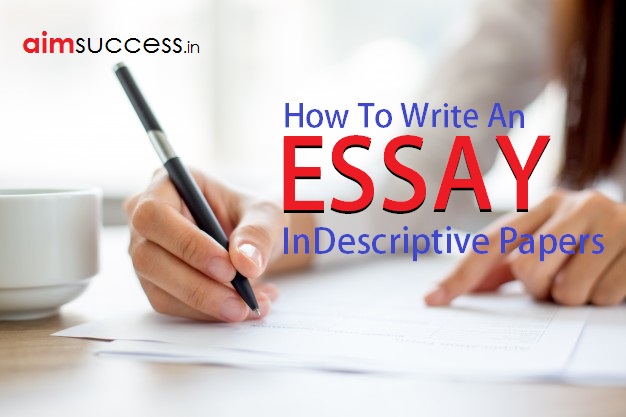How To Write An Essay? SBI PO/ CLERK Mains Descriptive Paper
An essay is any literary piece of work that is chiefly based on facts that deal with its theme from a limited and often personal point of view. It is a systematic, methodical, and an analytical composition that is usually much shorter and less formal than a dissertation or thesis.
You must examine the question meticulously to make sure you answer what is asked. Generally, the essay questions have some direction words that give a hint about what is wanted in the essay, such as compare, describe, explain, argue, discuss, critique, etc. These words are actually the task words that help you identify the task that needs to be done. Highlight the keywords and identify the topic words that indicate what the whole essay is going to be about. There should be at least three main paragraphs in an essay that you write.
- Make sure that your introduction gives the examiner a clear understanding of what your essay is about and tells him/her what to expect in the paragraphs to come.
- The main purpose of a body paragraph is to explain in detail the examples that support your thesis. Begin each paragraph with a theme sentence that connects the paragraph to the rest of the essay.
- The conclusion is a crux of all that has been discussed earlier. You can start by summarizing your main ideas by drawing together each component of you previously made arguments in a logical and significant way.
PATTERN to Write An Essay
INTRODUCTION >> BODY >> CONCLUSION
INTRODUCTION
- An introduction should contain some comment on the topic of the essay, explanation of what you understand by the title.
- Write a ‘brief’ on what you are going to write about in the subsequent paragraphs.
- Be Concise: 8-9% of the total number of words is usually recommended.
BODY
- The body of the essay will take each of these main points and develop them with examples and illustrations, using clearly defined paragraphs.
- This is where you will need to think about the structure of your essay.
- Make sure you follow a clear path through to your conclusion.
CONCLUSION
- Your conclusion will summarize your main ideas.
- It should be more than just a summary. It should be a thoughtful end to a piece of writing; fit in with the rest of the assignment.
- If appropriate, suggest results or consequences or make a call for some sort of action, make suggestions.
- For example- If in your Body part, you have criticized something, some scheme or anything then your essay must suggest some reforms. Don’t just end criticizing. You must suggest solutions or reforms too.
- Don’t start a new point, just develop on the points that you made up in your Body part.
- It should ideally be about 12 – 15% of total length.
Important Tips:
- Your words must distinctly express your thoughts. So, remember if you’ve got a clear plan and a real grasp of the topic, then only you can write with clarity and coherence.
- Don’t use complex words or phrases and avoid using slang and abbreviations.
- Generally, stick to shorter sentences, but remember to vary these with some longer ones occasionally.
- The main objective of your Essay is to be clear and concise so that the reader can follow your argument.
- The most important thing to remember is generally to try to avoid informal language, especially colloquial expressions and slang.
- In your writing, however, structure is much more important: sentences should be complete and ideas arranged into paragraphs or sections, and you should aim for perfection in your grammar and spelling.
- don’t (do not!) use contractions (eg it’s, he’ll, it’d etc): always use the full form (it is/has, he will, it would/had)
- Always write as concisely as you can, with no irrelevant material i.e; the content must focus on your idea about the topic.
- Some common linking words and phrases which can help you to do this are:
- but, however, on the other hand, yet indicate CONTRAST
- for example, that is indicate ILLUSTRATION
- similarly, moreover, furthermore, in addition indicate EXTENSION
- therefore, consequently, as a result, thus indicate CONCLUSION
- then, after that, ultimately indicate THE NEXT STEP
We hope you find these tips helpful for your upcoming Examination
Thanks
Team aimsuccess











